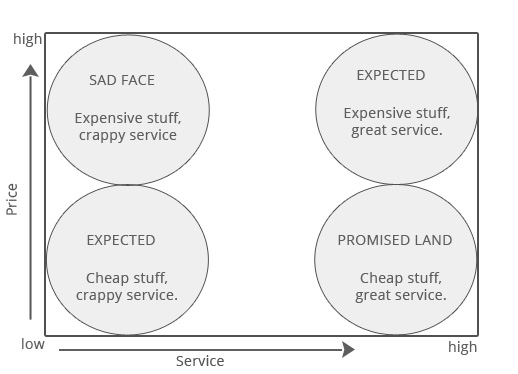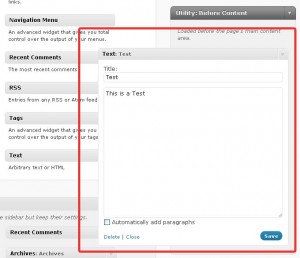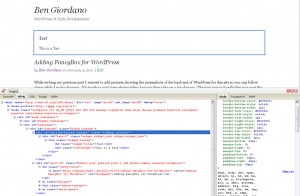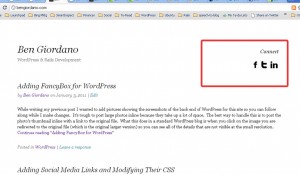Starting my own business in 2009 was a great step forward for me. It gave me something else to focus on besides my 9 to 5 and it gave me a chance to challenge myself and learn a ton of new things. No doubt a lot of the things I’ve learned have come in the way of “tough lessons” and some lessons have been tougher than others. I still for sure have tons to learn, something that is exciting as well but I wanted to share one of the best and “game changing” lessons I’ve learned to date – Building a business around the concept of positive cash flow.
What does positive cash flow mean?
I’m glad you asked. Wikipedia explains the concept of ‘Cash Flow’ as the movement of money into our out of a business over a specified period of time. Positive cash flow simply means that over this specified period of time more cash becomes available instead of less cash. In other words, as your business operates it is building it’s cash reserves instead of depleting them. It’s both a very simple and very profound idea at the same time and I think it’s best explained with a few examples.
Negative cash flow example
I’ll take this example right out of my own marketing and advertising business. Let’s say we win the bid on a new project, let’s say it’s a TV Commercial and the contract is worth $5,000. When we win the bid and sign on our new client it is standard in our industry to take a down payment for the work, usually between 25% and 50%. Let’s say for this particular job we agree to $2,500 down and the remaining $2,500 upon completion. We are setting ourselves up for a negative cash flow cycle. We are doing 100% of the work while only having 50% of the cash. We don’t get the other 50% of the cash until the work is completely delivered.
Let’s also say of the $5,000 contract, that $4,000 are our costs on the job, leaving a very realistic $1,000 in profit. Great right? I mean, 20% pure profit, after all costs? Yes, it is great, but the problem is that we have $4,000 in costs to take care of before we get our profit and we have only received $2,500 in cash from our new client. That means in order to do this job and make our profit we have to self-finance the additional $1,500 ($4,000 total costs minus $2,500 in cash, still $1,500 short). So we either need to have this cash built up in some kind of operational savings or we need to do what tons of other businesses do and take out a line of credit.
Positive cash flow example
Now an example in a positive cash flow business, we can take this one right from my other company. Let’s say this time we get a call from a new customer interested in a new website for their small business. Let’s say the job is priced at $500 for setup. However, this time let’s say that our company’s policy is to take all payment up front, that in order to get started we need to full $500. Let’s also say that the costs on the job are $400, so again, like the other example above we’re making 20% pure profit on the job.
This time around, we are setting ourselves up for a positive cash flow cycle. We are requiring the full $500 in cash to start the project before we do any of the work. Not only will our costs on the project already be covered when we start, but we will also have access to our profits as well, right up front. We don’t need to self-finance any part of the project, our customer is financing it by paying for it up front instead of upon completion. We are working in a positive cash flow cycle now, a surplus of cash over a specified period of time instead of a deficit.
Implications I’ve felt
Moving from running a company with a negative cash flow cycle to a positive cash flow cycle has seriously changed my entire outlook on the operations of a business. I don’t believe credit or outside financing at this stage of my business is correct. So then, this meant I was always juggling cash from one client to the next, keeping savings high in order to make it through the “cash poor” months while waiting for big checks to come in. I would sometimes have to lay out costs that would not be paid back for six or eight months, an absolutely brutal place to put yourself in as a small business owner, particularly one just getting started.
Since moving to a positive cash flow model the number one thing I’ve felt is… more relaxed. I know it might sound kind of silly but operating in a negative cash flow cycle is just super stressful. You have to hunt down customers that aren’t paying, always be playing catch up, finance your own costs, etc. With a positive cash flow all of these things disappear. Now, we can spend our time focused on more important things than hunting down delinquent accounts, like developing a strategic marketing plan. We can also invest some of that up-front profit into new advertising or an office, or anything we decide on. It’s been a total change from a “catch-up” mindset to a “in actual control” mindset.
The importance of your cash flow model is a lesson I wish someone had taught me when I first started my business 3-4 years ago, however, I am glad to have learned it and built my new business around it. I hope this helps some of you think about your cash flow and if it is hurting your growth (or personal health), I hope this sparks you to make some changes.
Quick side note
I know it’s tough sometimes to charge up-front for things that are typically paid upon completion, but that is kind of the whole thing, you have to be creative. We offer web design services, which historically have always been paid in full upon completion, but by “productizing” them into specific product offerings instead of an open ended service, we are able to charge as you would for any kind of product, which is in full and up front. Think of going to Best Buy or Staples or even Macy’s. You don’t put half down on a button down shirt or package of legal pads, you pay in full, before you get to use what you bought. This is our mindset with products, pay first, get use of second. With services we typically pay a little (or sometimes nothing at all) up front, then we get the service, then we pay the rest. You might have to be even more creative than we were, but I’m sure you can be and I’m sure you can use it to turn your cash flow into a positive cash flow.










